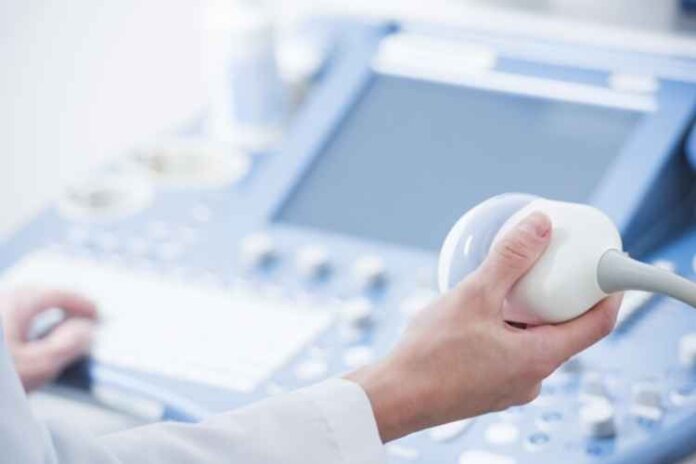
More than 200 million people worldwide suffer from peripheral artery disease (also known as PAD).
Are you part of this group? If so, it’s important to take action and seek treatment right away.
Vascular ultrasound is one of the most effective diagnostic and treatment options for PAD.
Never heard of this treatment before? Read on to learn more about peripheral artery disease and the importance of vascular ultrasound for diagnosing and managing PAD.
What Is Peripheral Artery Disease?
Peripheral artery disease is a condition that affects the circulatory system. It is characterized by narrowed or blocked blood vessels, which reduce blood flow to the limbs (particularly the lower limbs).
The most common cause of peripheral artery disease is atherosclerosis — fatty deposits and calcium buildup in the artery walls. Some well-known risk factors for PAD include age, diabetes, high blood pressure, high cholesterol, and smoking.
Symptoms of PAD
Often, those who struggle with PAD first notice pain in their legs, especially the calves, when walking. This pain (also known as claudication) tends to get better when they stop moving.
Some other symptoms associated with PAD include the following:
- Cramping in one or both hips, thighs, or calves after walking, climbing stairs, or engaging in other activities
- Numbness or weakness in the legs
- Coldness in the lower leg or foot (often just on one side)
- Sores on the toes, feet, or legs that don’t heal
- Color changes in the legs
- Hair loss or slowed hair growth on the feet or legs
- Slower toenail growth
- Shiny skin on the legs
- No or weak pulse in the legs or feet
- Erectile dysfunction (for men)
- Pain when using the arms
In the early stages, pain associated with PAD is often worst during exercise. As the condition progresses, though, the pain may persist even when you’re resting.
What Is Vascular Ultrasound?
Vascular ultrasound is a type of exam that uses sound waves to create pictures of the arteries. This helps physicians to locate blockages and address them.
Benefits of Vascular Ultrasound for Peripheral Artery Diseases
Vascular ultrasound for PAD evaluation is one of the easiest and least invasive ways to identify and treat blockages. This makes it a good option for those who are nervous about testing and spending time in the doctor’s office.
Vascular ultrasound is also beneficial for diagnosing PAD because it helps physicians choose the most effective treatment protocol for each patient.
Everyone’s experience with PAD is different, and everyone needs a unique treatment to manage their condition and improve their symptoms. Vascular ultrasound makes it easier for physicians to locate blockages, identify their size, and create a personalized plan to help you get them under control.
What to Expect from Vascular Ultrasound
The vascular ultrasound process is fairly straightforward. It typically involves the following:
Paperwork
On the day of the vascular ultrasound, you’ll arrive at the physician’s office and fill out some new patient paperwork. This paperwork will include a series of questions related to medications, current and previous medical conditions, and the providers you currently see.
Ultrasound Administration
After you fill out your paperwork, an ultrasound technician will administer the vascular ultrasound.
To do this, the technician will slowly run a handheld device over your skin. Clothing, jewelry, and accessories will need to be removed beforehand.
In most cases, the scan covers the hip, leg, and foot, including the tip of the toe to identify all potential blockages.
Meeting and Treatment Plan
After completing the ultrasound, you will meet with an advanced practice provider (usually a nurse practitioner or a physician assistant). They will go over your medical history and the ultrasound results while also performing a comprehensive physical exam.
Based on what they find, you will receive a personalized treatment protocol to help you manage your symptoms and improve your quality of life.
Other Treatments for PAD
In addition to using vascular ultrasound to diagnose and treat peripheral artery disease, there are other treatment options your physician may recommend. The following are some of the most effective options:
Lifestyle Changes
Lifestyle changes are some of the first interventions a medical professional might recommend after you’ve received your vascular ultrasound. Examples of lifestyle changes include eating a heart-healthy diet (one rich in fruits, vegetables, whole grains, and legumes) and exercising regularly (with supervision from a professional for added safety).
If you smoke, your physician will also emphasize the importance of quitting as soon as possible. Smoking increases your risk of developing PAD and other circulatory/cardiovascular conditions. The sooner you quit, the better your heart and vascular health will be now and in the future.
Medication
You may also need to start making blood-thinning medications like aspirin after being diagnosed with PAD. These kinds of medications help to improve blood flow and prevent future blood clots from developing.
If you have high cholesterol, you may also need to start taking medication to lower it. This will prevent blockages in the arteries, too.
Surgery
For those with severe symptoms, surgery may be needed to get rid of the blockages found during the vascular ultrasound.
Angioplasty is one of the most common surgeries. This procedure involves a catheter being threaded into the blood vessel. Then, a small balloon is inflated to reopen the artery wall and improve blood flow.
Your doctor may also recommend bypass surgery. This involves creating a path around a blocked artery with the help of a blood vessel from another part of the body or a synthetic blood vessel.
Thrombolytic therapy, which involves the injection of a clot-dissolving drug into your artery, can also be beneficial.
Get Help with PAD Today
Now that you know more about the benefits of vascular ultrasound for PAD, are you ready to look into it? Keep the information outlined above in mind so you can manage your health condition effectively and prevent it from escalating.
Are you interested in learning more about treating health conditions like PAD effectively? If so, we have lots of other heart health-related articles available on our site. Check them out today.











